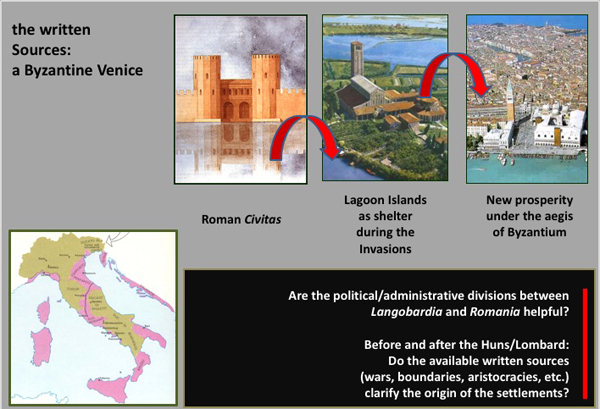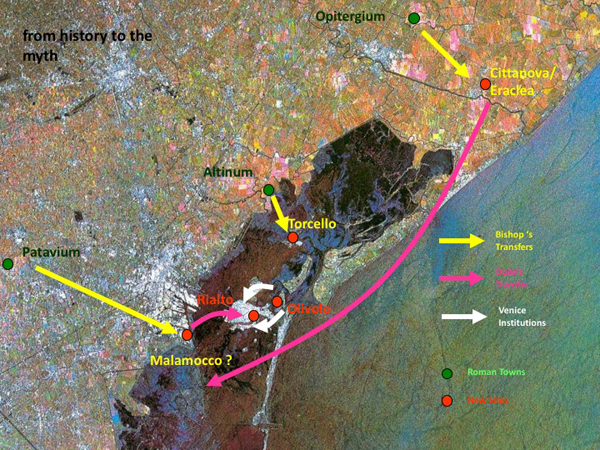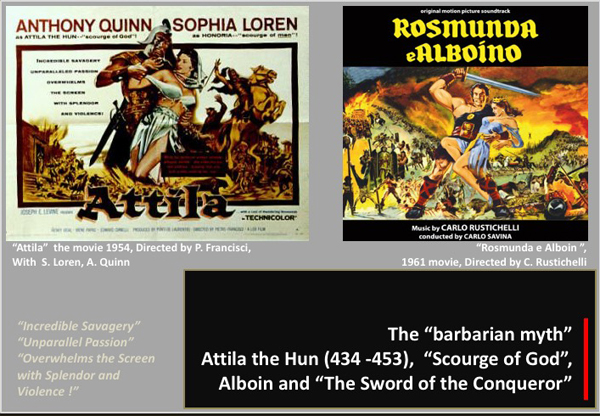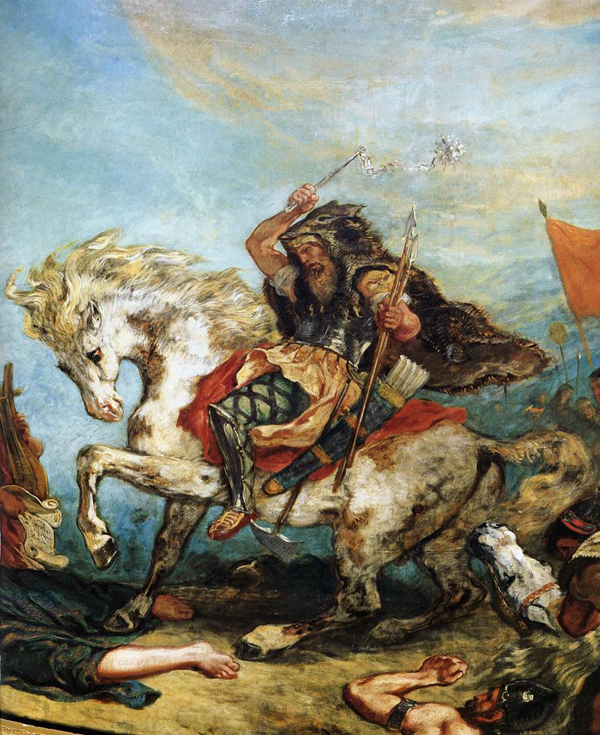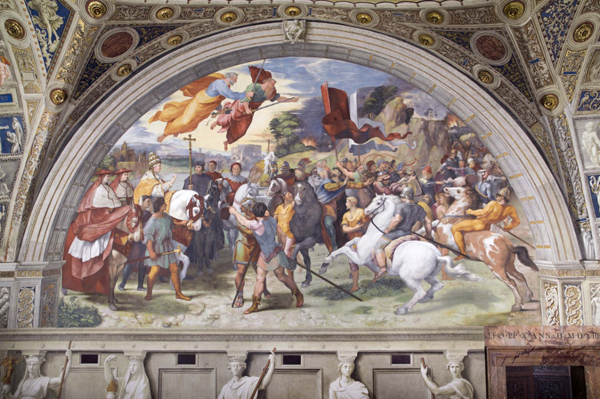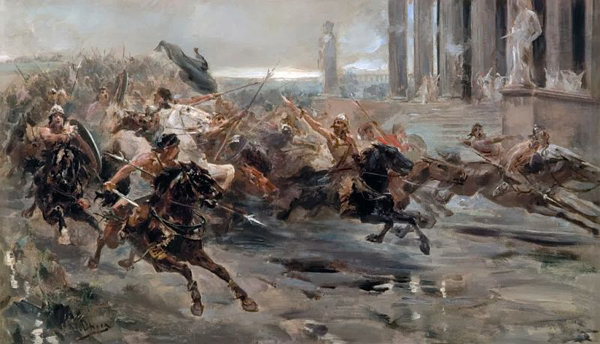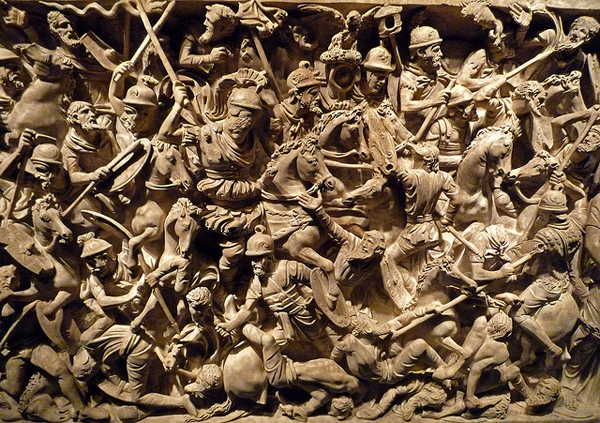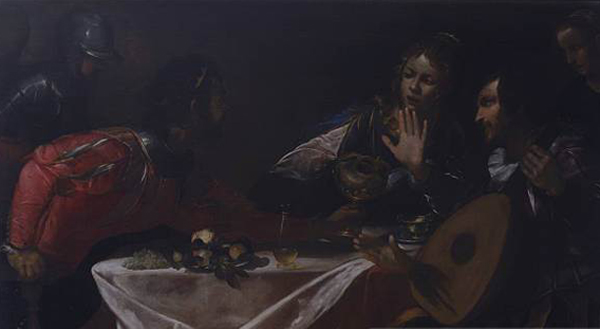Myth
Was it all Attila's fault?
We are told of the origins of Venice, through the devastating ‘barbarian’ raids. The story praises the strength and independence of the Venetics against Attila, King of the Huns and his mythical ferocity, and again against Alboin and Rothari, kings of the Lombards. The story tells us that in order to save their freedom and escape indiscriminate destruction of roads, houses, and churches, the ancestors of the Venetians would have sought refuge in the (inhospitable) salty waters or the (unstable) barena salt marshes of the lagoon. Only the strength of tradition and the ability to take initiative would then enable a new city to be built, blessed by the will of their Saints. The people in the islands were protected by Saint Heliodorus, the first bishop of Altinum, and then the Saint Mark the Evangelist, who - according to local tradition - had foreseen the greatness of the people of the lagoons in a premonitory dream. The fleeing people built new cities and laid the foundations for a civilization of free men, rich through their commercial enterprise, and unhampered by any kind of political submission.
The myth corresponds to a precise action of propaganda by the Venetian chancellery and took form during the High Middle Ages, starting with the chronicles of Giovanni Diacono in the 11th century, through the many celebratory chronicles of the 12th and 13th centuries, up to the complete definition of the origin myth, which in the Chronicle of Andrea Dandolo, Doge of the 14th century, became almost a sort of state religion, and thus no longer the subject of debate.
The myth is still alive today. It is mentioned in many history and arts guidebooks, in popular works, and even in school textbooks. Even when interpreting the many excavations in and around the lagoon, a rather mechanical approach is taken, using the ravages of the Huns, the Avars, the Lombards and, finally, of the Hungarians to explain all the destruction/reconstruction episodes.
Archaeological investigations, however, tell a different story of how Torcello and Venice were founded, where ‘Attila’ and the other barbarians play just a side role.
The archaeological excavations undertaken in the Roman of the hinterland, showed no evidence of abrupt change, but rather a gradual process of development leading to colonisation of the lagoons.
Gradual landscape transformation contributed to new successful settlement locations. Warehouses, docks, and piers followed the natural movements of the river delta and the lagoon. New harbour area were built in sitesbetter suited to moorings and navigation. This gradual shift started in Roman times, influenced also by social and economic changes, when salt production and fish farming became profitable activities with investments in money, men, and infrastructures. The ceramics, wooden objects, coins, layout of settlements, and commercial installations brought to light by excavations are indicative of just how long this process was, spanning centuries and generations. The recovered assets and infrastructure show a progressive shift of human groups, predominantly due to workplace constraints (mostly slave labour) promoted by an élites that had economic control over the area.
The canals and port system of Altinum (the nearby Roman city in the hinterland) as is clear from the excavations, started gradually silting up already in imperial times. Altinum, a important Roman emporium, became less suited to accommodate the unloading of goods. At same time the maritime trade contacts with the East Mediterranean and the flow of goods continued: Torcello, Cittanova, and then Rialto, became the new harbours.
The new political order in maritime Venetia, with the juxtaposition of the Lombard kingdom in the mainland and the Byzantines on the coasts, served to boost and complete the transfer of administrative, religious, and economic power to the lagoon archipelagos.
The fortunes of Torcello, Cittanova and Rialto settlements (almost cities) seem to lie in their ability to conduct business across these two worlds, by maintaining and building relationships with the Lombard and then Carolingian élites of the Po region, while cultivating intense and profitable relations with the Arab world and the Byzantine Empire.
Last update: 23/12/2022

